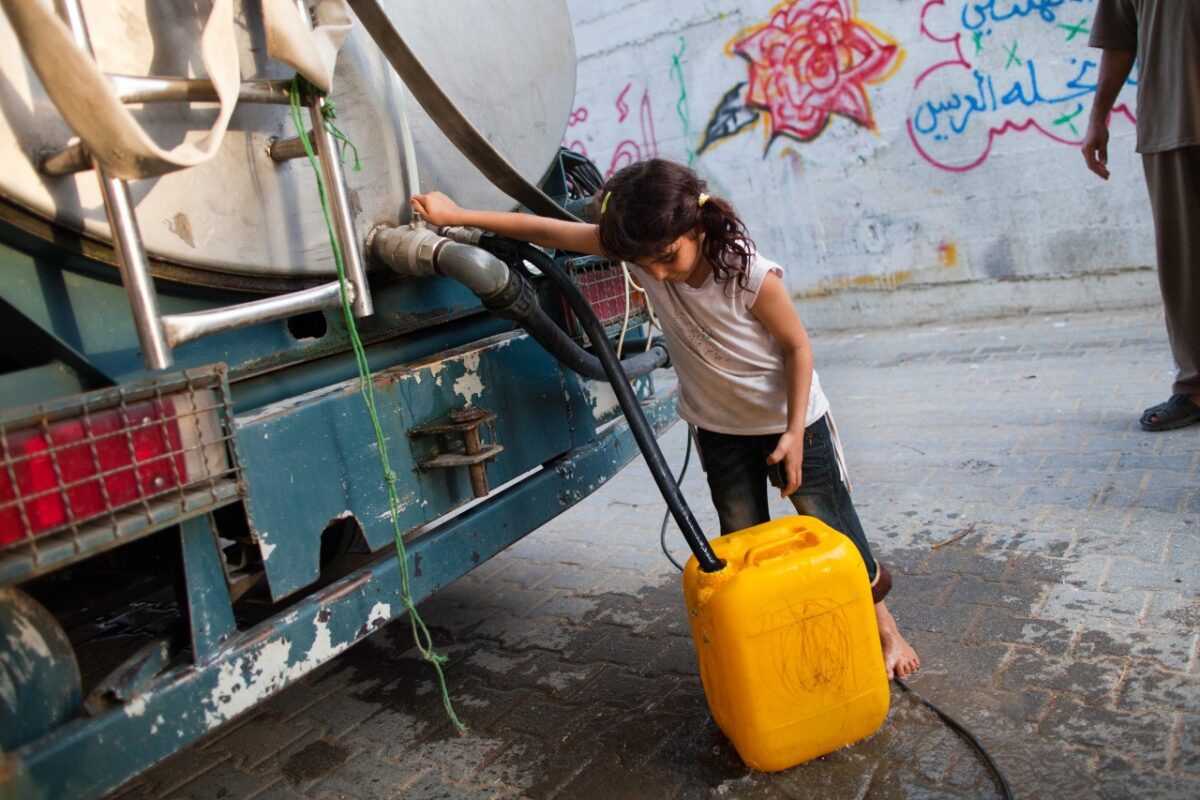10 things you should know about the water crisis in Palestine

1. According to international humanitarian law, Israel is responsible for the welfare of Palestinians in the occupied West Bank and Gaza, which includes ensuring that Palestinians have access to clean water.
Under international humanitarian law, an occupying power is responsible for the welfare of the civilian population and must ensure that civilians are provided with or allowed to secure the basics for survival including food, water, medical supplies and
shelter.
2. More than 200,000 Palestinians in the West Bank don’t have access to
running water.
More than 200,000 Palestinians in the West Bank have no access to running water. In towns and villages connected to a water network, taps run dry frequently. Many only receive piped water once a week or once every few weeks.
3. Palestinians in the West Bank consume on average 40 litres of water a day.
In 2015, the average domestic consumption rate among Palestinians in the West Bank was approximately 40 litres per capita per day, well below the minimum 100 litres recommended by the World Health Organization.
4. The company Mekorot applies discriminatory water prices and charges Palestinians higher rates than Israelis.
The basic price that Mekorot charges settlers and customers in Israel is NIS 1.8 per cubic metre water, compared to an average of NIS 2.5 per cubic metre for Palestinians.
5. Israel consumes at least 10 times more water for agriculture than Palestinians in the West Bank.
Palestinians in the West Bank are forced to use coping strategies to make up for the lack of water they need for agriculture, these include only growing rain-fed crops, keeping few or no animals at all or drilling unlicensed shallow wells.
6. Thirty-nine water, sanitation and hygiene structures (WASH) were
demolished or confiscated by the Israeli army in 2015.
By demolishing or confiscating 39 Palestinian owned water and sanitation structures in the West Bank, Palestinian communities are prevented from accessing water and many are forced to transfer.
7. In Gaza, 90 million litres of untreated or partially treated sewage is discharged daily in to the Mediterranean Sea.
Nearly 90 million litres of untreated or partially treated sewage is discharged daily into the Mediterranean Sea, provoking water-borne illnesses and polluting the environment.
8. Over 100,000 people in Gaza are cut off from public water networks, as a result of the 2014 military destruction of the water infrastructure.
In fact, Gaza’s coastal aquifer- the main source of water in the coastal enclave – could become unusable by as early as this year, and irreversibly damaged by 2020.
9. Israel and the settlements use water from the West Bank aquifers, with 15% of it going to Palestinian inhabitants.
85% of the water is diverted for the use of Israelis in Israel and the settlements.
10. Only 5.8% of Palestinian families in the Gaza Strip can access water that is good enough to drink.
In Gaza, over 90% of water is unfit for human consumption and people are forced to buy drinking water at high costs.
Calculate your Zakat
Confused about how to calculate your Zakat? Try our simple-to-use calculator





